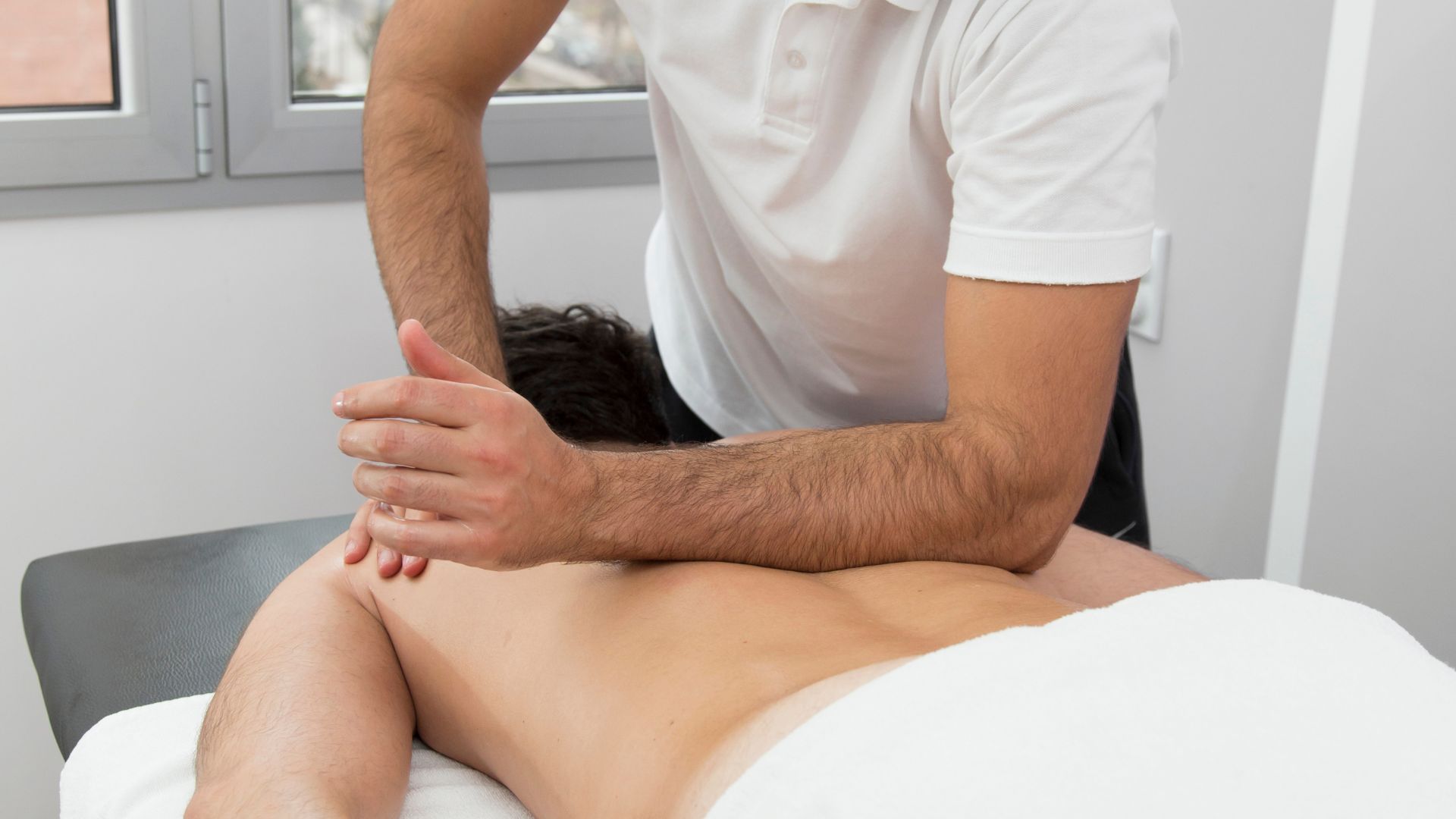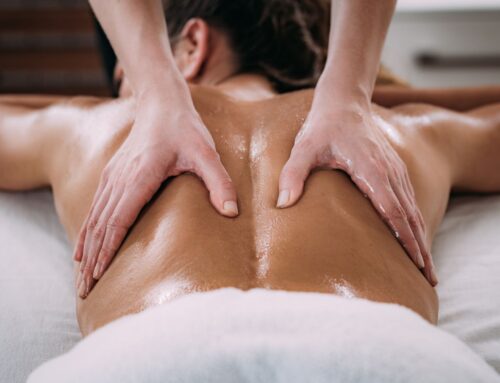Myofascial release massage can help unlock tension in your body and release stress. According to the World Health Organization (WHO), stress has been classified as the health epidemic of the 21st century. Stress can manifest itself physically as muscle tension, that is experienced as aches, pain and spasms.
The long-term effects of stress on your body can develop into very serious conditions. To counteract these effects, it is important to relieve muscle tension and manage stress levels. In this blog, we’ll explore the benefits of myofascial release massage, various techniques, and how it can improve muscle tension and your overall well-being.
Table of Contents:
- What is myofascial release massage?
- Benefits of myofascial release massage
- Myofascial release massage techniques
- Conclusion
What is Myofascial Release Massage
Myofascial release massage is a holistic therapy that targets the fascia, a connective tissue that envelopes and supports our muscles and organs. “Myo” in Greek is a combining form meaning muscle and “fascial” relates to the fascia,
Under healthy conditions, fascia is strong but flexible. However, due to trauma or injury fascia can become rigid leading to loss of motion and/or pain.[i]
Myofascial release massage aims to release this tension and restore the fascia’s natural mobility, thus enhancing flexibility, relieving pain, and improving overall body function. Unlike traditional massage techniques, myofascial release involves gentle, sustained pressure and stretching to target specific areas of tension.
You may also enjoy reading: What is Deep Tissue Massage
Benefits of Myofascial Release Massage
1. Pain Relief
Myofascial Release Massage has shown significant results in alleviating chronic pain caused by conditions like low back pain. By releasing fascial restrictions, the massage promotes better circulation and helps reduce inflammation, leading to pain relief.
Anywhere between 70-85% of people will experience low back pain once or more in their lifetime. One study investigated how myofascial release could treat non-specific low back pain. The study showed a decrease in pain and disability for individuals who received myofascial release compared to a placebo treatment.[ii] Two other studies showed that myofascial release can reduce the severity of pain in people with non-specific low back pain.[iii]
Myofascial release has also been shown to be effective in treating Raynaud’s phenomenon. This is a condition that occurs due to hot or cold weather and is caused by a reduction in blood flow in the fingers and toes. It can last from seconds to hours and symptoms include numbness and throbbing which can be uncomfortable. The figure below shows that after 3 weeks of treatment using myofascial release, episodes decreased in length from approximately 140 to 50 minutes.
You may also enjoy reading: The Benefits of Swedish Massage
2. Stress Reduction
This type of massage is deeply relaxing, which can help reduce stress levels. By targeting both the physical and emotional aspects of tension, myofascial release massage can bring about a sense of calm and well-being.
Research has been conducted to find out whether myofascial release massage is effective in treating tension-type headaches. Tension-type headaches (TTH) are characterized by pressing or tightening on both sides of the head and has an unknown cause. One study found that myofascial release massage was more effective at treating TTH than a treatment of slow stroking massage.[iv]
You may also enjoy reading: Myofascial Trigger Points and Back Pain
3. Injury Prevention and Recovery
Athletes and active individuals can benefit from myofascial release massage as it helps prevent injuries by maintaining healthy fascia and promoting quicker recovery from muscle strain or injuries. One type of injury that can occur as a result of weak fascia or muscle is a hernia. This occurs when a weakness or a preexisting opening in your muscle or connective tissue allows an organ or other tissue to push through the abdominal wall.[v] Some risk factors include repeated heavy lifting, chronic constipation and chronic obesity.
Myofascial Release Massage Techniques
Direct Myofascial Release: This technique involves applying sustained pressure directly to the restricted fascia to release tension and facilitate improved mobility.
Indirect Myofascial Release: With this approach, the therapist applies gentle pressure along the fascial restrictions to encourage the body to unwind and release tension naturally.
Rolling Technique: The therapist uses their forearms or elbows to apply broad, gliding strokes along the length of the fascia, promoting better tissue mobility.
Cross-Hand Stretching: In this technique, the therapist applies a stretching motion across the fibers of the fascia to help release tension.
Fascial Unwinding: This technique encourages the body to move spontaneously in response to the therapist’s touch, allowing the fascia to unwind and release stored tension.
You may also enjoy reading: Thai Massage Services
Conclusion
Myofascial release massage is a massage therapy technique that is beneficial for a variety of health conditions. By targeting the fascia, it can release deeply held tension, alleviate pain, and restore the body’s natural balance.
Whether you’re seeking relief from chronic pain, improved flexibility, or simply looking to unwind and de-stress, myofascial release massage may be the key to unlocking a more vibrant and pain-free life.
As with any therapeutic treatment, it’s essential to consult with a qualified massage therapist to determine the most suitable approach for your unique needs. If you are not sure if myofascial release massage is right for you, contact us to set up a complimentary consultation with one of our registered massage therapists.
References
[i] Cleveland Clinic. (2022, August 15). Myofascial release therapy. Cleveland Clinic.
[ii] Arguisuelas, M. D., Lisón, J. F., Doménech-Fernández, J., Martínez-Hurtado, I., Salvador Coloma, P., & Sánchez-Zuriaga, D. (2019). Effects of myofascial release in erector spinae myoelectric activity and lumbar spine kinematics in non-specific chronic low back pain: Randomized controlled trial. Clinical Biomechanics, 63, 27–33.
[iii] Tamartash, H., Bahrpeyma, F., & Mokhtari dizaji, M. (2022). Comparative effect of lumbar myofascial release with electrotherapy on the elastic modulus of lumbar fascia and pain in patients with non-specific low back pain. Journal of Bodywork and Movement Therapies, 29, 174–179.
[iv] Ajimsha, M. S. (2011). Effectiveness of direct vs indirect technique myofascial release in the management of tension-type headache. Journal of Bodywork and Movement Therapies, 15(4), 431–435.
[v] Cleveland Clinic. (2023, February 7). Hernia. Cleveland Clinic.
Written by









